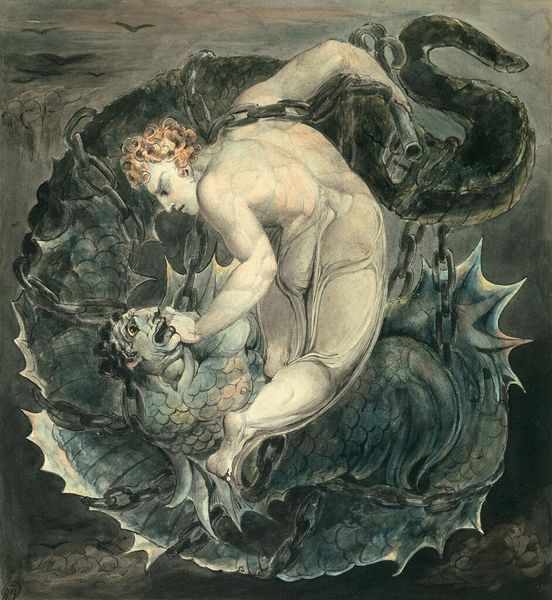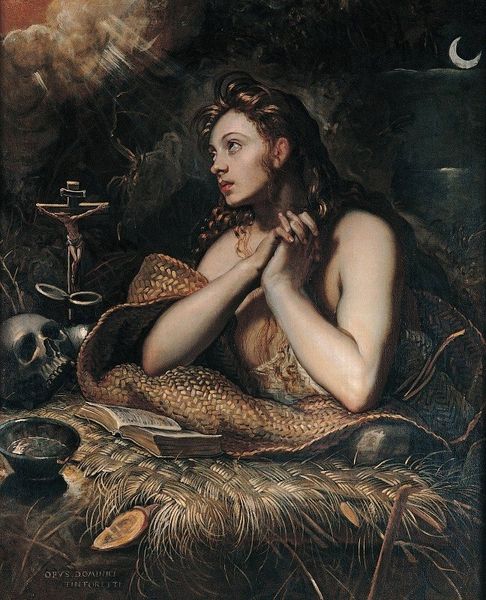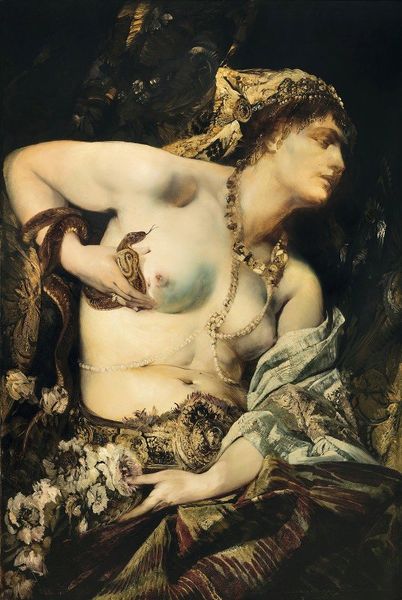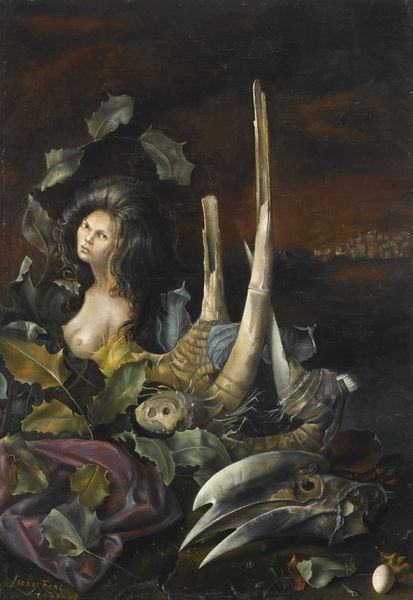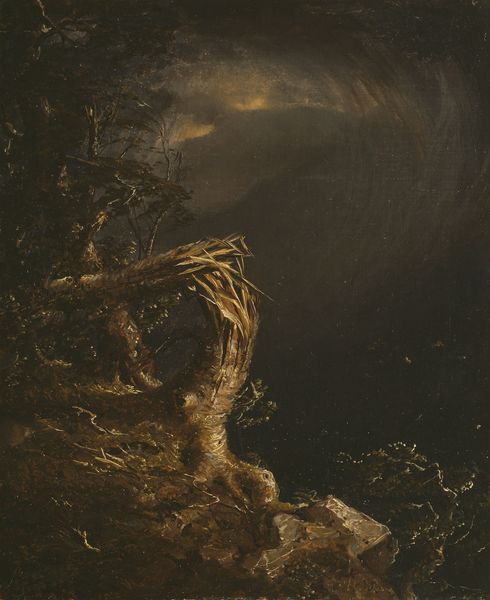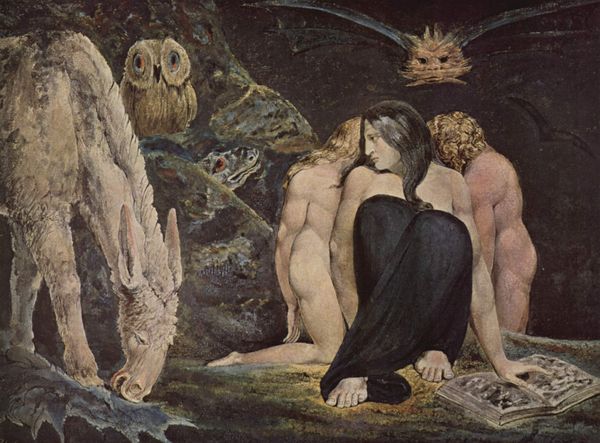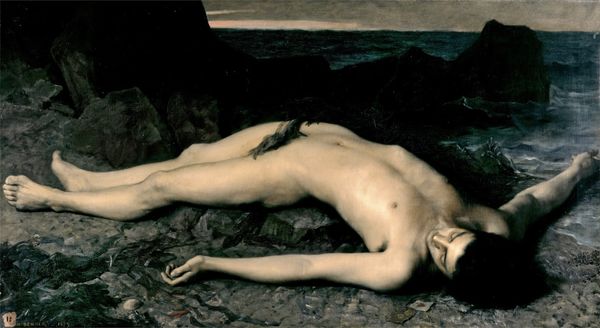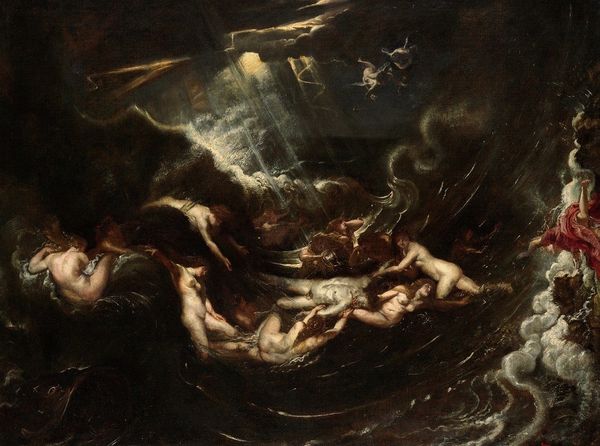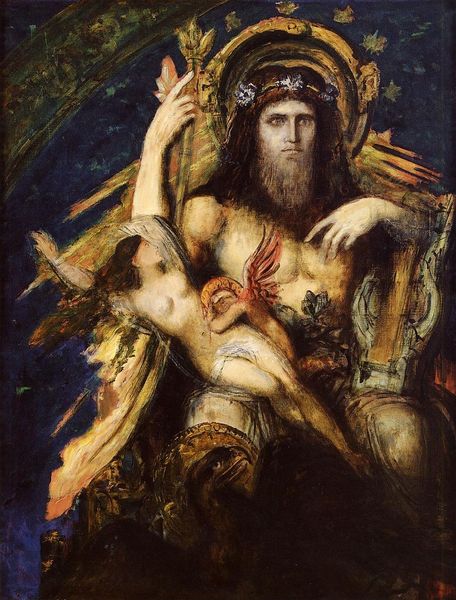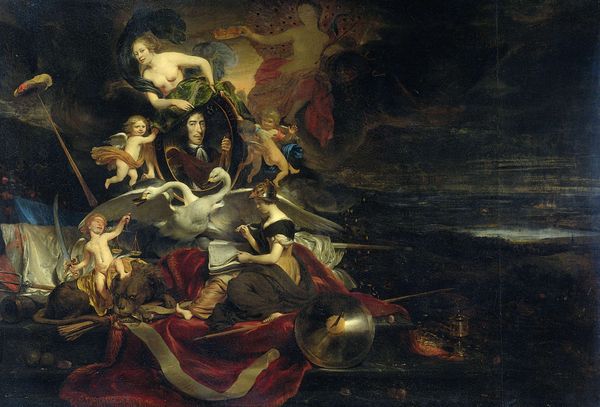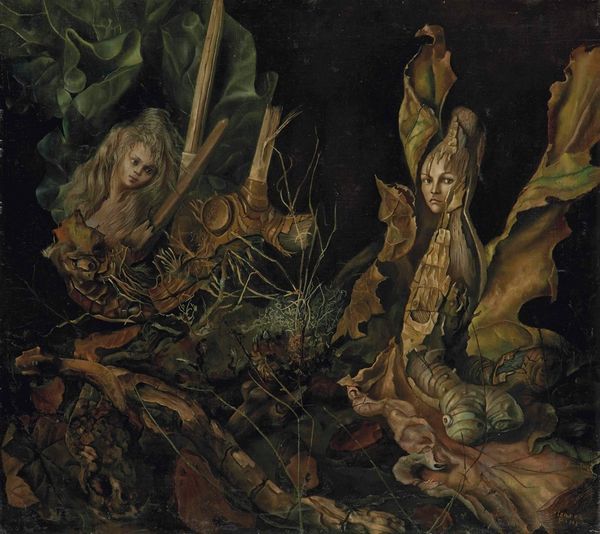
painting, oil-paint
#
portrait
#
baroque
#
fantasy art
#
painting
#
oil-paint
#
landscape
#
figuration
#
oil painting
#
chiaroscuro
#
mythology
#
history-painting
#
realism
Copyright: Public Domain: Artvee
Curator: Here we have Peter Paul Rubens' "Head of Medusa", executed in oil on panel around 1617-1618. What strikes you first? Editor: An immediate visceral response... it's unsettling. The disembodied head, the snakes, the lifeless eyes staring upwards—a gruesome spectacle of patriarchal violence and its aestheticization. Curator: It is indeed arresting. Rubens masterfully employs chiaroscuro, heightening the drama through stark contrasts of light and shadow, further emphasizing the texture of the snakes' scales and Medusa’s pallid skin. Notice how the composition, a seemingly chaotic arrangement, actually directs the viewer’s eye inexorably to the central focal point, the severed head. Editor: But consider the loaded symbolism! Medusa, punished for Poseidon's rape in Athena's temple, transformed into a monster—a narrative weaponized to demonize female rage and victimhood. The snakes themselves can be interpreted as phallic symbols, representing the masculine threat Medusa posed. It is a visualization of female punishment, by men, for men, depicting the fear of female power and the grotesque display of the body. Curator: The Mannerist influence is quite prominent as well; that attention to contorted figures, emotion. Rubens goes even further than Caravaggio to create an entire theatre out of light, movement, and death, presenting it to our discerning eyes, using texture to describe the grotesque scene. Editor: The Baroque era absolutely embraced theatricality to disseminate narratives to serve their political functions, but can we truly divorce art from its potential to perpetuate oppression and be seduced by aesthetics? How many of these narratives are built upon oppression that remains unacknowledged to this day? How can the artistic virtuosity blind us from these narratives, especially in our contemporary setting? Curator: These paintings persist as sites to acknowledge the complex interplay between visual pleasure, theoretical interpretation, and political considerations. Editor: Indeed, engagement, both aesthetic and critical, transforms an unsettling spectacle into a vital, yet difficult moment for contemplation. Curator: Ultimately the formal elements create an unforgettable experience.
Comments
No comments
Be the first to comment and join the conversation on the ultimate creative platform.

